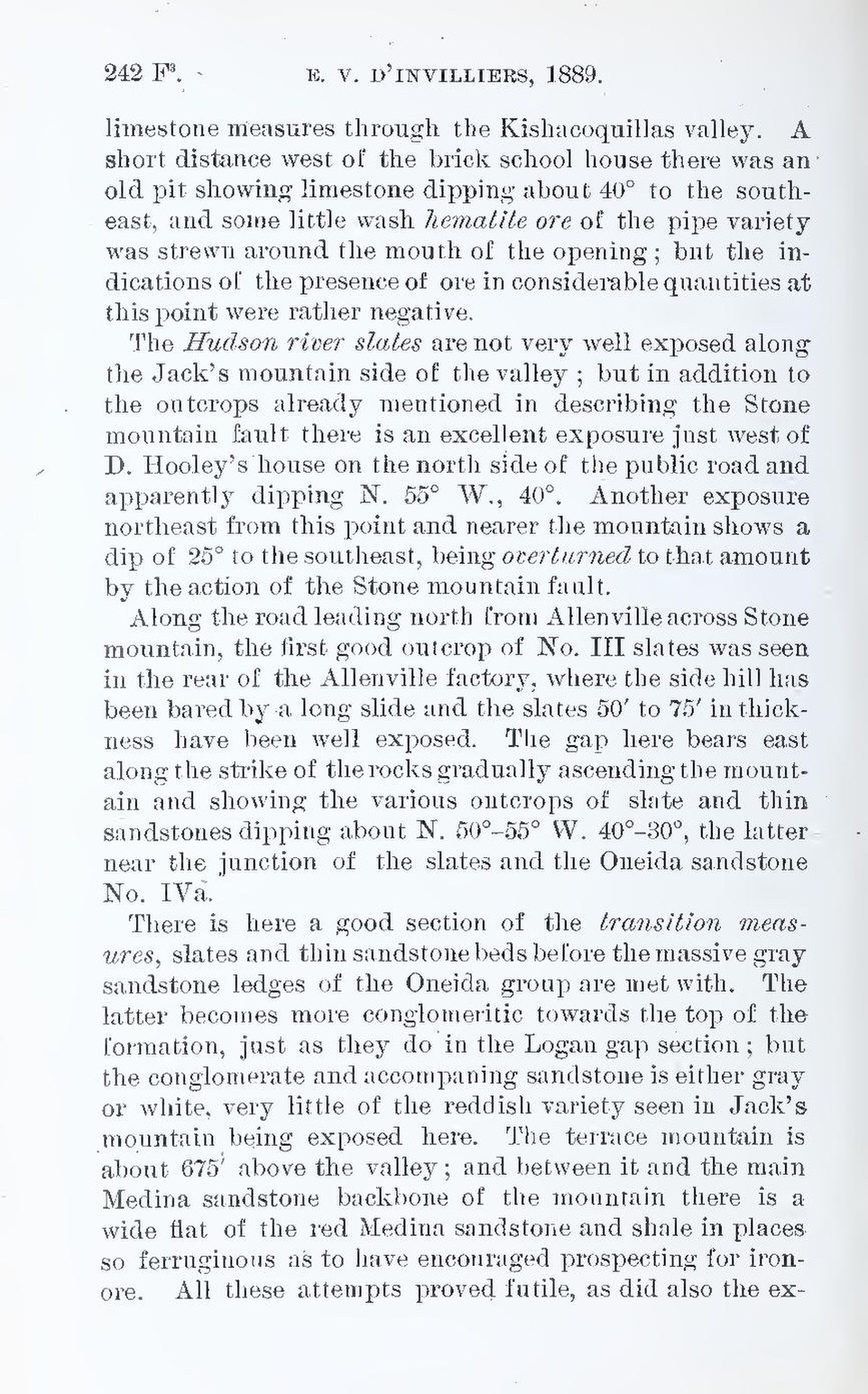limestone measures through the Kishacoquillas valley. A short distance west of the brick school house there was an old pit showing limestone dipping about 40° to the southeast, and some little wash hematite ore of the pipe variety was strewn around the mouth of the opening; but the indications of the presence of ore in considerable quantities at this point were rather negative.
The Hudson river slates are not very well exposed along the Jack’s mountain side of the valley; but in addition to the outcrops already mentioned in describing the Stone mountain fault there is an excellent exposure just west of D. Hooley’s house on the north side of the public road and apparently dipping N. 55° W., 40°, Another exposure northeast from this point and nearer the mountain shows a dip of 25° to the southeast, being overturned to that amount by the action of the Stone mountain fault.
Along the road leading north from Allenville across Stone mountain, the first good outcrop of No. III slates was seen in the rear of the Allenville factory, where the side hill has been bared by a long slide and the slates 50′ to 75′ in thickness have been well exposed. The gap here bears east along the strike of the rocks gradually ascending the mountain and showing the various outcrops of slate and thin sandstones dipping about N. 50°–55° W. 40°–30°, the latter near the junction of the slates and the Oneida sandstone No. IVa.
There is here a good section of the transition measures, slates and thin sandstone beds before the massive gray sandstone ledges of the Oneida group are met with. The latter becomes more conglomeritic towards the top of the formation, just as they do in the Logan gap section; but the conglomerate and accompaning sandstone is either gray or white, very little of the reddish variety seen in Jack’s mountain being exposed here. The terrace mountain is about 675′ above the valley; and between it and the main Medina sandstone backbone of the mountain there is a wide flat of the red Medina sandstone and shale in places so ferruginous as to have encouraged prospecting for iron-ore. All these attempts proved futile, as did also the ex-
